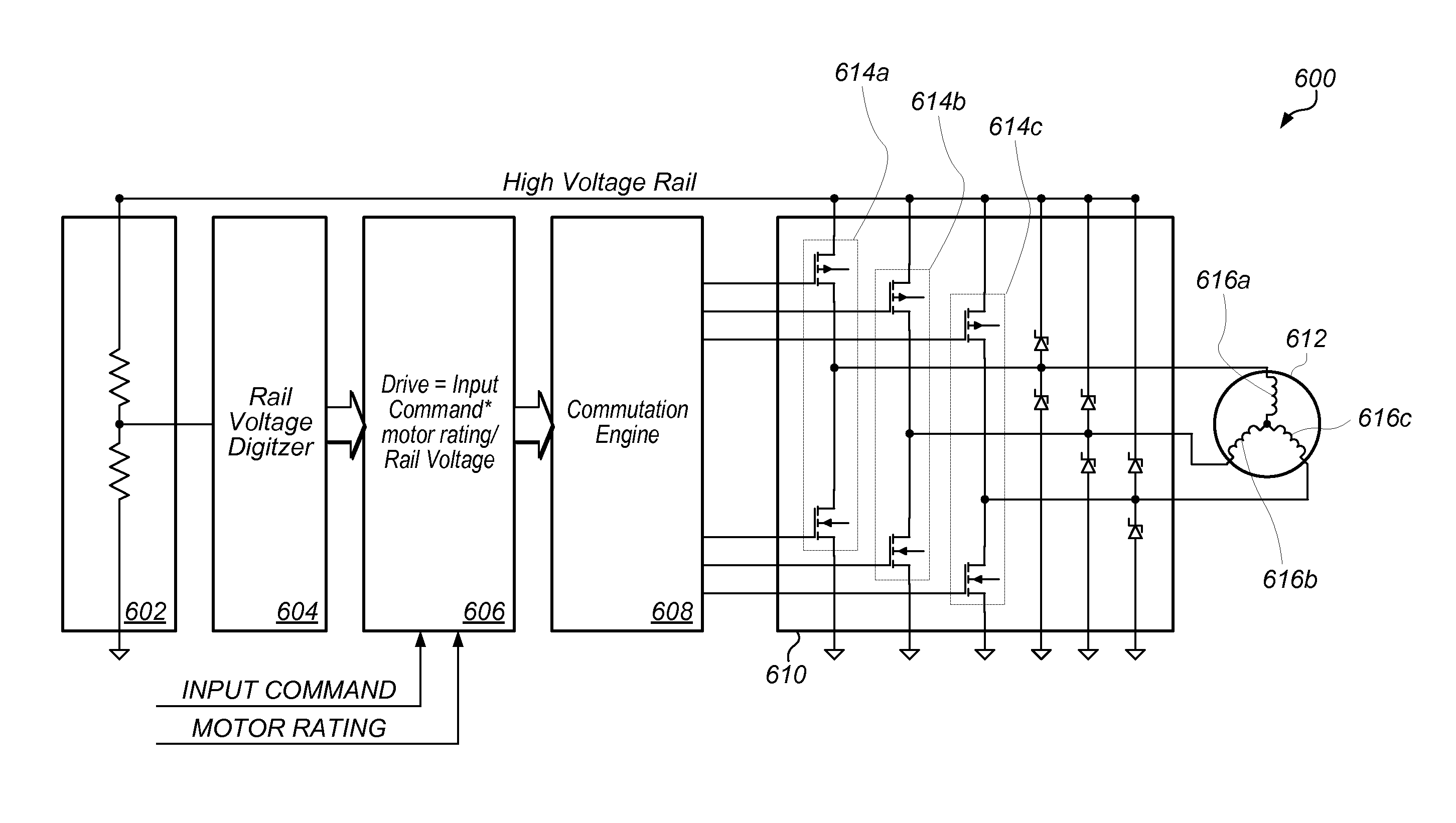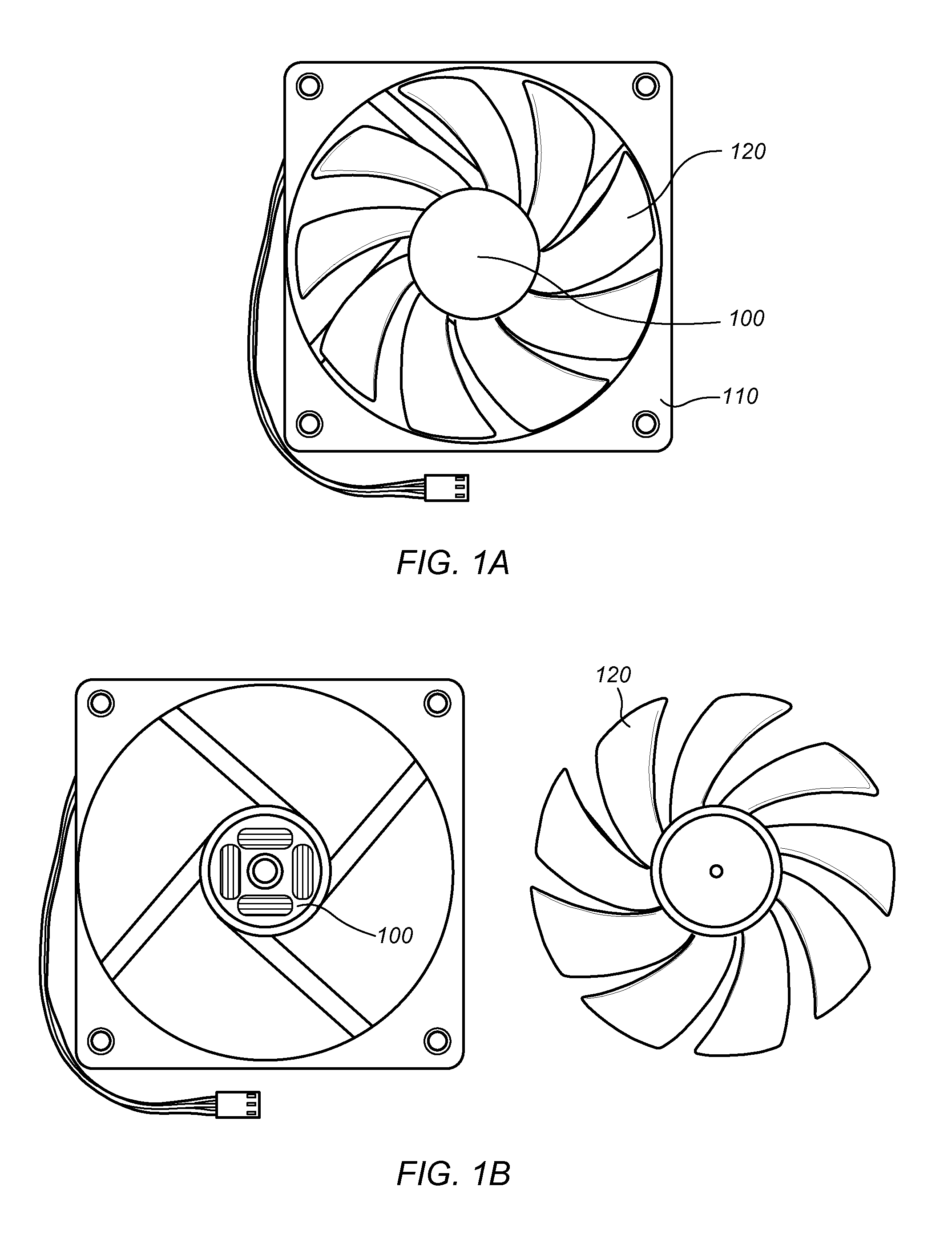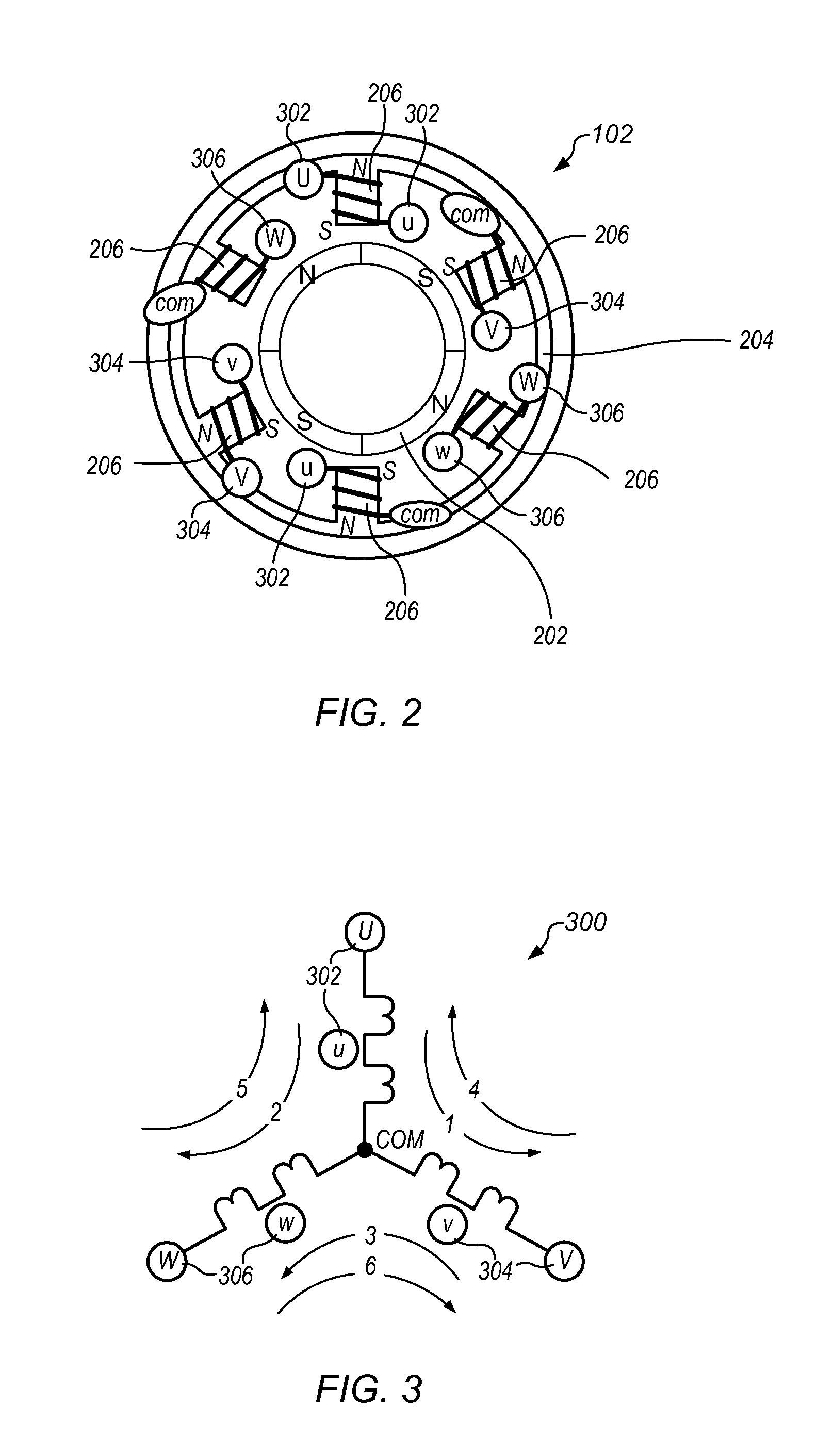Driving Low Voltage Brushless Direct Current (BLDC) Three Phase Motors from Higher Voltage Sources
a three-phase, low-voltage technology, applied in the direction of dynamo-electric converter control, dc motor rotation control, electronic commutators, etc., can solve the problems of reducing efficiency, affecting the operation of the motor, so as to achieve constant output power, wide input voltage variation, and efficient power transfer
- Summary
- Abstract
- Description
- Claims
- Application Information
AI Technical Summary
Benefits of technology
Problems solved by technology
Method used
Image
Examples
Embodiment Construction
FIGS. 1A and 1B—Exemplary Fan and Fan Motor
[0027]FIGS. 1A and 1B illustrate an exemplary fan assembly 110 according to one embodiment. Fan 110 may be a cooling fan, for example a fan for use in a laptop or a desktop computer. Fan 110 may alternatively be a commercial or industrial fan, or in general any type of fan driven by a motor. Fan assembly 110 may include a motor assembly 100 as well as fan blades 120. Motor assembly 100 may comprise a motor (e.g. motor 102 shown in FIG. 5) as well as drive circuitry (for example, drive control logic 502 shown in FIG. 5) for controlling motor 102.
[0028]Although FIGS. 1A and 1B illustrate a fan as the load being driven by the motor, it should be noted that the system and method for controlling a motor as described herein may be suited for driving any of various types of loads, including without limitation hard disk drives, drive motors for appliances, propellers, wheels, pumps, or other loads.
FIG. 2—Brushless Four-Pole Three-Phase Motor
[0029]F...
PUM
 Login to View More
Login to View More Abstract
Description
Claims
Application Information
 Login to View More
Login to View More - R&D
- Intellectual Property
- Life Sciences
- Materials
- Tech Scout
- Unparalleled Data Quality
- Higher Quality Content
- 60% Fewer Hallucinations
Browse by: Latest US Patents, China's latest patents, Technical Efficacy Thesaurus, Application Domain, Technology Topic, Popular Technical Reports.
© 2025 PatSnap. All rights reserved.Legal|Privacy policy|Modern Slavery Act Transparency Statement|Sitemap|About US| Contact US: help@patsnap.com



